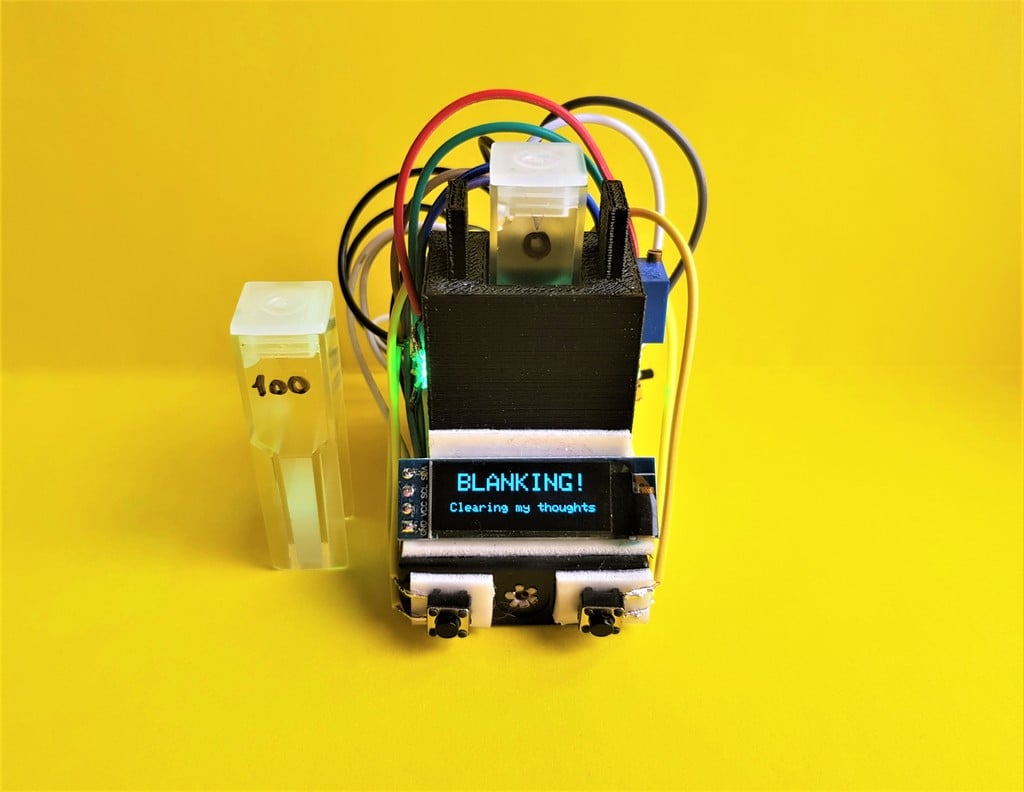
Minimalist Low-Cost Colorimeter
thingiverse
To grasp the natural world we must measure it. Historically, access to scientific equipment has been restricted to formal academic institutions and research labs. Today, anyone can build measurement tools to conduct their own science experiments! In its simplest form, a colorimeter passes visible light of known wavelength and intensity through a liquid sample and measures the change in the light as it passes through. Comparing this value to a substance of known characteristics (control) we can infer particular differences between the two. Typically, colorimeters produce wavelengths of light in the visible spectrum and often include components native to human vision. The human eye has evolved to process intensities of red, green, and blue light and thus our colorimeter utilizes the same wavelengths to reliably match what is seen with what is measured. By calculating the amount of each particular color present in the sample, we can compute the apparent color. Colorimeters are widely used to monitor the growth of a bacterial or yeast culture. They're commonly employed to measure and monitor the color in various foods and beverages, including vegetable products and sugar. Aside from general research laboratories, colorimeters have many practical applications such as testing water quality by screening chemicals like chlorine, fluoride, cyanide, dissolved oxygen, iron, molybdenum, zinc, and hydrazine. They are also used to determine the concentrations of plant nutrients like ammonia, nitrate, and phosphorus in soil or hemoglobin in blood. More applications of colorimetry can be seen in color printing, textile manufacturing, and paint manufacturing for precise quality inspection. However, this tool tends to be expensive. A minimalist and affordable version of a transmission-based colorimeter is proposed here. This colorimeter is in its first version and is open for beta testing. The goal was to reduce the cost of the device to as low as possible without using access-prohibitive technologies. We first presented it during our workshop at Maker Faire Rome 2017. It may not be pretty yet, but its data will be sexy! As they say, never judge a book by its cover or a colorimeter by its unappealing looks! Version #2 will see a significant reduction in indoor mounting tape! Stay tuned for more updates!
With this file you will be able to print Minimalist Low-Cost Colorimeter with your 3D printer. Click on the button and save the file on your computer to work, edit or customize your design. You can also find more 3D designs for printers on Minimalist Low-Cost Colorimeter.
